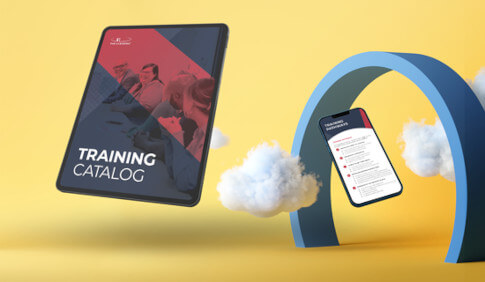When our workplace change experts talk about our services at The Clearing, they’re often asked, “What exactly is workplace change management?” While we’ve shared our definition of workplace change management and why change management is critical when implementing new ways of working or moving into a new physical workspace, I would like to dig a little deeper into both of those areas using The Clearing’s “Getting to Day One” premise.
Getting to Day One
“Day One” is the first experience employees have when a workplace change goes into effect – for example, their first day walking into a new or newly renovated space. Getting it right sets the tone for success and puts your organization on the path to achieving its goals. Getting it wrong may lead to a host of negative feelings, distractions, and disruptions that prevent your organization from meeting its mission. The old adage applies: you only get one chance to make a great first impression.
Ask leaders about their vision for Day One in a revamped space, and you’re likely to encounter a familiar response: they envision their team seamlessly transitioning into the new environment, embodying the intended aspirations from the outset. That vision is commendable, and leaders must remember that a great Day One doesn’t just happen – it’s the result of extensive planning, testing, coordination, and engagement with your employees over the course of weeks, months, or even years. That reality is the foundation for the “Getting to Day One” premise: putting in the work ahead of time is critical to creating a great experience for your employees and minimizing disruption to the organization’s work.
For practical purposes, let’s focus our “Getting to Day One” exercise around a workplace move. As with all change efforts supported by The Clearing, we base everything around those at the center of the change: your people. Here are the primary areas we, as workplace change management experts, focus on to create a great Day One for everyone involved.
Get the Story Straight.
Ask the majority of leaders spearheading organizational change, and you’ll often hear commendable reasons behind their actions: a drive for heightened productivity, a commitment to enhancing employee experience, and a desire for more efficient capital utilization, among others. There may also be other, more tactical reasons for a move, such as the end of a lease with no option to extend.
You and your leadership team must be aligned on your specific reasons for and goals of your organization’s move. Because you will get questions – from staff members, board members, or anyone in between. Being aligned on the reasons and goals and then clearly communicating them is critical for overall success and particularly to anticipate and help manage the tone for Day One. The approach used for messaging, communications and engagement, and welcoming people into the space may need to vary depending upon the context and reasons for the move. The concept of consistent and appropriately voiced communication brings us to our next point.
Build the Foundation.
When considering a new workspace, begin with communication. Communication must be a two-way street because the best way to meet your objectives is to provide your employees with what they tell you they need to be successful, not what you think they need. From there, continue to engage your people throughout the process. Ways to bring your employees into the process include:
- Including employee perspectives in space design conversations
- Enrolling staff in the move preparation process
- Providing updates on construction efforts
- Offering briefings to let employees know exactly what to expect when they arrive at the new space on Day One
- Soliciting feedback from employees throughout the process, including up through Day One itself
Throughout the process, communication and engagement efforts should be focused on cultivating employee buy-in and, especially as Day One gets closer, reducing the likelihood that employees are surprised by anything when they arrive in the space.
As a final pro-tip, don’t underestimate the level of detail you need to share. What might not be a big detail for you as a leader may be significant for a staff member. For example, if a developer is worried about how their computer will be set up, they won’t be able to focus on their job – which is the perfect segue to our next point.
Minimize Anxiety.
The prospect of moving to a new space can induce anxiety and angst. People spend a great deal of time in the workspace – maybe even more time awake than they do at home during the workweek, depending on their schedules and commutes. The space touches on many aspects of their day-to-day life, including the boundaries they set up (both physical and mental) to work effectively, the relationships they cultivate with colleagues, and even perceived status. The prospect of a change to those aspects of their life is often disconcerting.
For example, if you move people from individual offices to a common space without solid reasoning and buy-in (see above), expect angst. An office provides those physical boundaries we discussed above and, in many organizations, status. That angst likely won’t always show up in terms of people raising their hand and saying “I don’t like this.” It will also show up through non-verbal reactions and/or changes in behavior, where the unwelcome change becomes the focus of that individual – negating the goals you set for your change at the outset.
Leverage your ongoing communications and engagement efforts to understand how your employees feel about the upcoming move. Acknowledge and empathize with their experiences while continuing to focus on the opportunities offered by the change. Reduce uncertainty wherever possible by sharing what is known, what may not yet be known, what to expect, and otherwise cultivating trust in the leadership of the move effort.
Nail the Logistics.
My colleague Kelly Barlow believes there is a simple way to measure Day One success. Ask if everybody showed up in the right place and knew where to sit, how to use the space, and how to use the tools.
If the answer is yes, you’ve succeeded – and a big part of that was by nailing the logistics. Getting the logistics right is dependent on our second area of focus and helps drive the third. By effectively communicating (building the foundation), people know what to do and what to expect. When they know what to do and what to expect, anxiety is minimized. Here are three ways to ensure you hit the logistics mark.
- First, make sure the space is ready to receive employees. Establish a space readiness checklist to ensure that everything functions as it should in each individual workspace and in common areas (e.g., break rooms, restrooms, meeting rooms), from locks and furniture to technology and appliances. An easy way to ruin the first impression of a space is for employees to discover that critical items do not function on Day One.
- Second, do a Day One dry run. Day One is the shining moment – it is what will ultimately drive the success or failure of this effort. If people show up and it’s a mess, you’re setting them back emotionally and torpedoing your goals from the outset. Instead, bring people in in small groups before the big day to familiarize them with the space, where they’ll sit, and how things will work.
- Third, have a dedicated team on-site on the big day who are waiting to welcome people, provide directions, host tech demonstrations and trainings, and generally ensure everyone is treated well and feels like they belong. Finally, have that team remain in place for the first week to ensure everything sticks – particularly workplace aspects like tech and equipment training.
If this process seems overwhelming, that’s understandable. However, with proper change management support, it can be a positive journey. Our team of experts is here to assist you in asking the pertinent questions for your organization, communicating your plans effectively, and garnering organizational support for your transition. Feel free to reach out anytime at nick.srebrow@theclearing.com – I’m eager to discuss how we can be of assistance.






 The Clearing’s Employee Experience
Improvement model, adapted from Itam
& Ghosh, 2020, focuses on three objectives:
The Clearing’s Employee Experience
Improvement model, adapted from Itam
& Ghosh, 2020, focuses on three objectives: 














